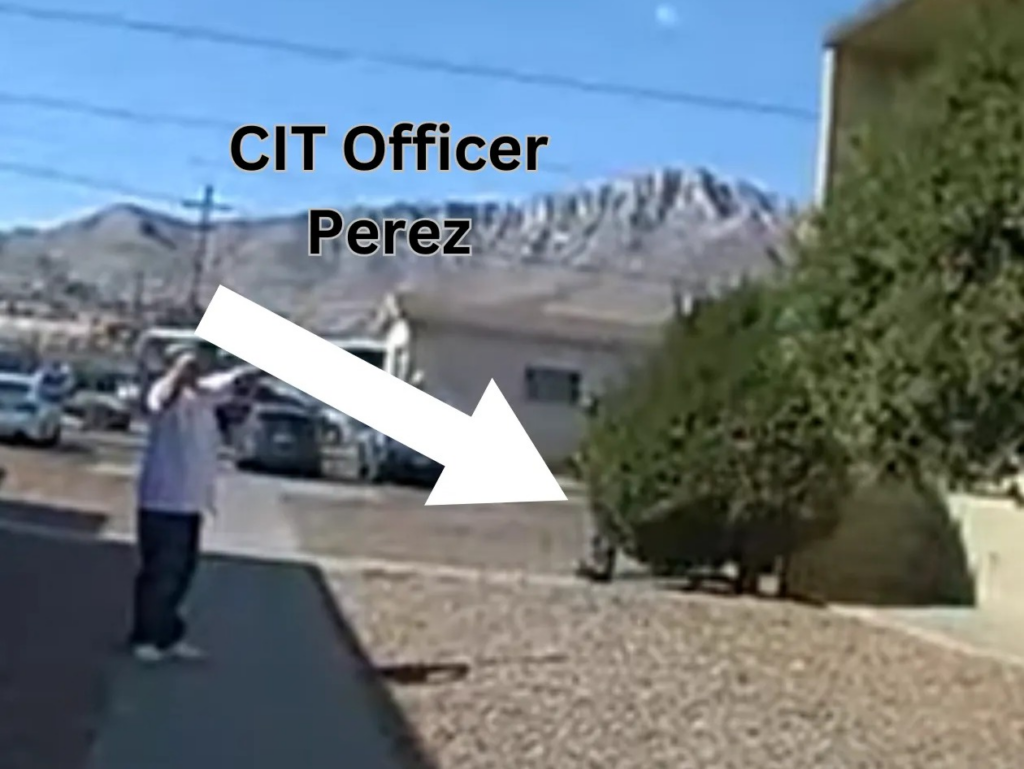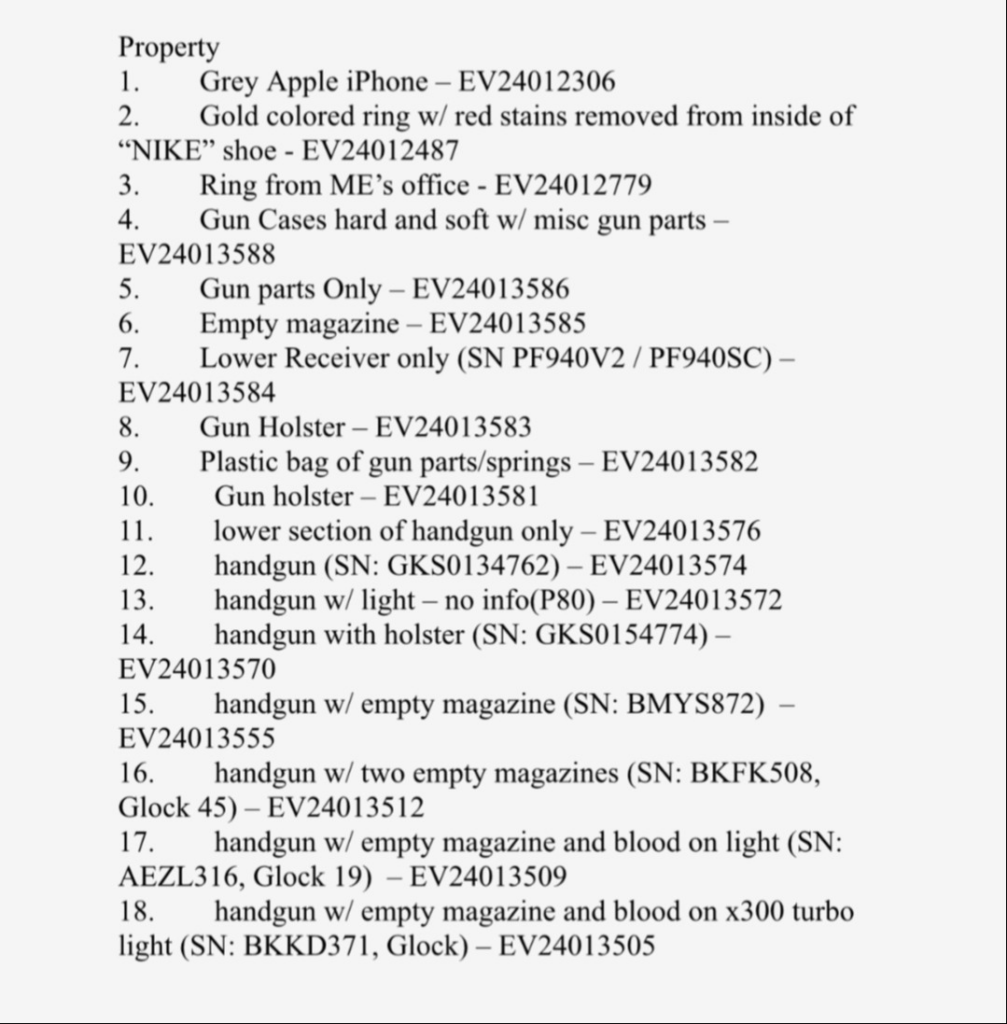27 March 2024, El Paso, Texas, Steven Zimmerman – On 23 March 2025, I wrote an article entitled EPPD CIT Has Blood On Their Hands. In that article, I interviewed Darcy Thomas, the mother of Martin Herrera-Garcés, whom I mentioned in an article entitled Who Polices the Police?
In the case of Martin Herrera-Garcés, a twenty-seven-year-old man, his mother, Darcy Thomas, spent three days calling the El Paso Police Department (EPPD) for help with her son, who is suffering from a mental health emergency.
On 10 April 2024, the El Paso Police Department’s Crisis Intervention Team (CIT) was dispatched to meet and talk to Martin. According to Ms. Thomas, CIT never spoke with her son. The next day, the El Paso Police Department’s SWAT team shot him twenty-seven times.
When CIT arrives at a call, they are supposed to follow a protocol. The first step is to contact the person and speak with them. The CIT officers are supposed to try to determine the problem and then evaluate the situation to see if they meet Department qualifications for intervention.

For example, let’s say you are suicidal, with a gun to your head. CIT is supposed to speak with you, talk you down, and get you the help you need. In one documented case, To Save a Life: An EPPD Officer Puts His Life on the Line, CIT Officer Humberto Perez, badge #2765, call-sign CIT707, hid in the bushes while an EPPD Patrol Sergeant intervened and talked the suspect down.
We have a history of systemic failure with CIT in El Paso, Texas, and we also have a problem with SWAT.
In the matter of Martin Herrera-Garcés, we have a situation where a man was having a mental crisis, and CIT wouldn’t speak to him at all. The determination that Martin had all his mental faculties was made by a patrol officer who did possess no special training to deal with such matters.
On 11 April, Martin began having issues. A 911 call was made indicating that shots were fired. Officers arrived and immediately called for SWAT. Sometime between 10 and 11 PM, Martin was shot and killed by the SWAT team members.
Darcy Thomas, his mother, has questions that no one at the El Paso Police Department has ever addressed. As I’ve begun sending out Freedom of Information Requests (FOIA), I have questions no one at EPPD wants to answer.
One question is why Ms. Thomas was able to receive property back from the El Paso Police Department, quicker than one normally would expect.

“With any active shooter, it is almost unheard of that anyone could retrieve their property back so quickly,” says an officer with EPPD. “It can take up to two to three years before the property is released.”
Why was the property released so quickly?
More significant questions surround the contact, or lack thereof, with the Crisis Intervention Team and SWAT. What happened between about 6:30 PM and the time Martin Herrera-Garcés was shot and killed by the police?
In hopes of acquiring answers, we sent a FOIA to the El Paso Police Department requesting copies of the CIT and SWAT After Action Reports.
According to Global Guardian, an after-action report for a CIT incident is a structured review that analyzes the response to a crisis, identifies strengths and weaknesses, and uses the report to improve future contact.
An after-action report for SWAT is much like the one CIT would generate. In Texas, after-action reports (AARs) for SWAT operations serve as a tool for analyzing responses to incidents, identifying strengths and weaknesses, and developing better strategies for future events.
Both after-action reports would allow others also to understand what actions were taken, the reasons for those actions, and why the outcome was shooting Martin twenty-seven times.
What do the after-action reports for SWAT and CIT say? We’ll never know. Why? The El Paso Police Department and the City of El Paso, in answer to our FOIA, said there are no responsive documents.

“That is absolutely unheard of,” says another EPPD Officer. “They just wanted to turn a blind end to this and forget it. I think this is something they don’t want brought back up, and they are angry at you for writing about it.”
We’ve been told that the El Paso Police Department released the evidence and has aggressively taken a role in mitigating any damage to the Department or SWAT’s image by releasing the body cam footage.
“They are treating this like an 8183,” another Officer with EPPD says. “Just like a hit and run. There was damage; now, let’s get away from it. SWAT is the driver of that vehicle, and CIT is the passenger.”
The SWAT Commander, Ken Law, badge number 1532, should have ensured that each SWAT present files an after-action report. Failing to direct officers to write the reports and their failure to write them is a blend dereliction of duty.
What if the Department has the after-action reports but does not want to release them? What can we conclude? The El Paso Police Department says it values transparency. If it holds transparency as a core value, it is not willing to release the after-action reports to the media or the family.
“We have to get an attorney or some attention drawn to this problem because all of this should have complete disclosure about everything that happened, and there should be some kind of paperwork. This doesn’t make any damn sense. It sounds like they’re trying to cover something up,” says Ms. Thomas, Martin’s mother. “You’re telling me in modern-day society that my son can be murdered by SWAT or a police agency, and they don’t even have to make a report about what is going on here.”
Another question, why would the El Paso Police Department send Ms. Thomas a picture of her car in police evidence?
“That’s something that shouldn’t be done, is never done,” says a Police Lieutenant. “That goes against policy.”

You can reach Steven Zimmerman at [email protected]
